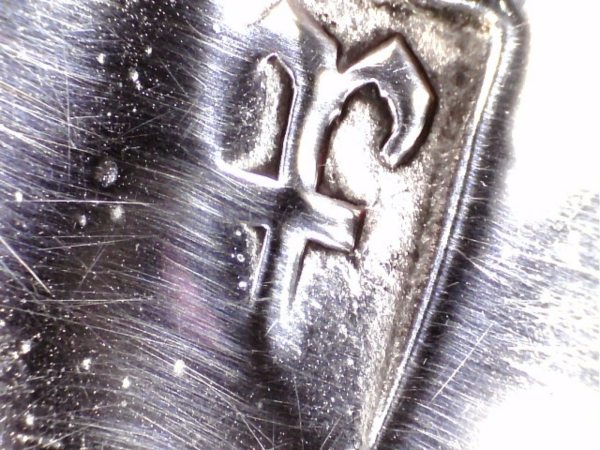A William III Britannia standard silver punch bowl, London, 1701
The circular bowl standing on a central, profiled baluster foot, engraved with a coat-of-arms. The upper rim is finished with a profile.
Motto: Honus Sur Honore. Literally: the burden is on honor.
Britannia Silver with 4 Hallmarks:
HxLxD 6,69in x 11,42in x 11,42in
50,37oz
Private collection
Slight signs of age and superficial scratches. The four hallmarks are present on side of the body.
Since we are not professional conservators or restorers, we urge you to consult with a restorer or conservator of your choice who will be better able to provide a detailed, professional report. Prospective buyers must understand that any statement made by Coradi Rare Finds is merely a subjective opinion.
The Britannia silver standard (95.84% fine silver) was introduced in 1697 by an Act of Parliament under William III to replace the sterling silver standard (92.5% fine silver) for wrought silver items. This measure aimed to curb the melting and clipping of sterling coinage, which had become widespread after the Restoration under Charles II due to increasing demand for luxurious silverware.
Changes to Hallmarks:
The "lion passant guardant" (denoting sterling silver) was replaced by the "Britannia" figure.
The "leopard's head" (London Assay Office) was replaced by the "lion's head erased".
Silversmiths had to register a new maker's mark based on the first two letters of their surname.
Reception and Reversion:
Britannia silver was softer, less durable, and more expensive than sterling. Many silversmiths pushed for a return to the sterling standard, while some, especially Huguenot craftsmen accustomed to higher French standards, advocated for its retention. Britannia silver also facilitated exports to France, where sterling silver did not meet local standards.
The sterling standard was reinstated on 1 June 1720, alongside the restoration of its original hallmarks ("lion passant guardant" and "crowned leopard head"). However, Britannia silver was not abolished and remained a voluntary alternative. Post-1720, it was rarely used except for high-quality reproductions of antique designs.
Dual Marking and Confusion (1720–1739):
Silversmiths used their original initials for sterling silver and the new two-letter surname marks for Britannia silver.
By 1739, confusion led to a decree requiring silversmiths to destroy old marks and register new ones using their Christian name and surname initials.








